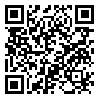Thu, Nov 7, 2024
[Archive]
Volume 16, Issue 3 (7-2024)
itrc 2024, 16(3): 1-8 |
Back to browse issues page
Download citation:
BibTeX | RIS | EndNote | Medlars | ProCite | Reference Manager | RefWorks
Send citation to:



BibTeX | RIS | EndNote | Medlars | ProCite | Reference Manager | RefWorks
Send citation to:
Farhoodi M, Mahmoudi M, Bokaei M H. ParsiAzma Challenges on Persian Text Analysis in Social Media. itrc 2024; 16 (3) :1-8
URL: http://journal.itrc.ac.ir/article-1-676-en.html
URL: http://journal.itrc.ac.ir/article-1-676-en.html
1- ICT Research Institute Tehran, Iran , farhoodi@itrc.ac.ir
2- ICT Research Institute Tehran, Iran
2- ICT Research Institute Tehran, Iran
Abstract: (120 Views)
The ParsiAzma[1] challenges in 2023 focused on Improving Persian text analysis in social media. We designed four shared tasks: stance detection, sentiment analysis, emotion detection, and claim detection in social media posts. The goal of these challenges was to bring together various teams to develop the best models for these challenges and to establish a standard test platform for future Persian language research. A total of 28 teams participated, competing to solve the specified tasks. The most effective models in all shared tasks utilized the BERT model. Text embedding was first obtained using a BERT[2]-based model, followed by final predictions with either an MLP[3] or CNN[4]. Additionally, several meta-classifiers were developed as fusion models to leverage the strengths of individual models. The best results based on accuracy criteria for the four challenges—stance detection, sentiment analysis, emotion recognition, and claim detection—were 0.67, 0.67, 0.45, and 0.56, respectively. These results indicate that emotion detection has lower accuracy than the other three tasks, highlighting its complexity.
[1] https://parsiazma.ir/
[2] Bidirectional Encoder Representations from Transformers
[3] Multi-Layer Perceptron
[4] Convolutional Neural Network
Keywords: stance detection, claim detection, sentiment analysis, emotion detection, social media, competition
Type of Study: Research |
Subject:
Information Technology
Send email to the article author
| Rights and permissions | |
 | This work is licensed under a Creative Commons Attribution-NonCommercial 4.0 International License. |




